PEW Science & What to Know Before Buying a Suppressor
While interviewing companies about suppressors, one name kept popping up in conversation; Jay from PEW Science. After hearing a lot of positive feedback about what he’s doing in an attempt to push the suppressor industry forward for both consumers and manufacturers, we reached out for an interview. Jay obliged and discussed the story behind PEW Science and gave us a lot of good info on what to know before buying a suppressor for your AR.
Q: Jay, thanks for taking time out of your very busy schedule to chat. Let’s start with your background, as I imagine it’s quite specialized to be able to do something like PEW Science.
Jay, PEW Science – My name is Jay, and I have been a practicing engineer since late 2005, and my engineering degrees are in structural engineering, with a specialization in structural dynamics and the analysis of fast transients. In layman’s terms, that means that I analyze, design, and test systems that are subject to loads and events that happen very quickly. For example, blast loads, projectile loads and impacts, and associated phenomena like that. My principal area of practice is applied research and design and analysis for anti-terrorism and force protection and to protect people from hazardous loading – principally, weapons effects and accidental explosions, and attack.
I worked for the U.S. government for a few years, working on weapons effects, target defeat, etc. Later, I moved to the private sector, where I have been practicing since late 2007. So, for the past 15 years, I’ve been performing protective design, analysis, and research… systems to protect people from hazards. Through that work, I’ve gained expertise in the technical analysis of events that happen very quickly, and one thing that happens very quickly is a gunshot. I’ve been a firearms enthusiast, hunter, and shooter recreationally for many years, and I’ve been interested in silencers and used them over the years.
For a long time, there were no established standards for evaluating the sound suppression performance of suppressed small arm weapons systems. I had taken a break from the firearms community and small arms, as I was doing other things. When I came back into the game, I looked at what was on the market regarding silencers, and I really couldn’t make heads or tails of what types of technology had improved, what was good, what was bad. I was stuck with the typical consumer dilemma of ‘what should I buy?’ I couldn’t find any reliable information. I had the idea about a decade ago, and so since there was still nothing out there, I decided to do it myself. This was when I founded PEW Science.
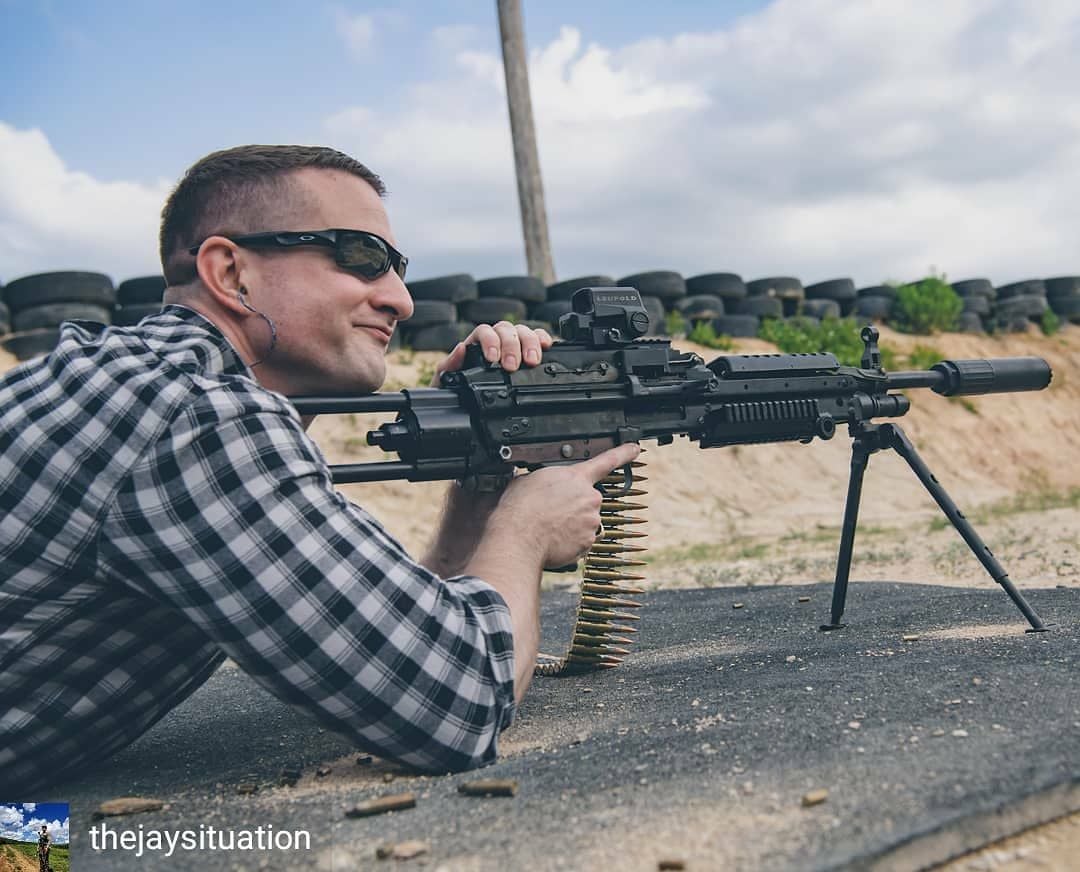
Q: Was the PEW Science idea fully formed, and did you know how you would go about testing at that point?
Jay, PEW Science – The first thing I wanted to do was to get a baseline of suppressed small arm information to understand really what people were showing others. I started doing some of my own testing. Before that, I knew I would need some equipment that would assist me in properly characterizing these phenomena and I would need to know what the equipment is telling me. I can’t rely on some kind of third party, off-the-shelf solution. I needed to go back to basics, and I needed to understand that if I test the system, what I am actually measuring. I actually designed and built my own test apparatus called PEW-SOFT, and I started testing suppressed weapon systems with it.
I started to gather information, not just in little snippets, but I decided to test the entire gunshot. I would record the entire gunshot from before it happened when there was complete silence, all the way until the gunshot was over, and all of the gas had left the silencer. Gunshots are a very fast event, but if you record at a very fast rate, and you use that fast rate over a very long period of time relative to the duration of the gunshot, you are capturing a complete window of time. Once you have that data, you can do amazing things with it.
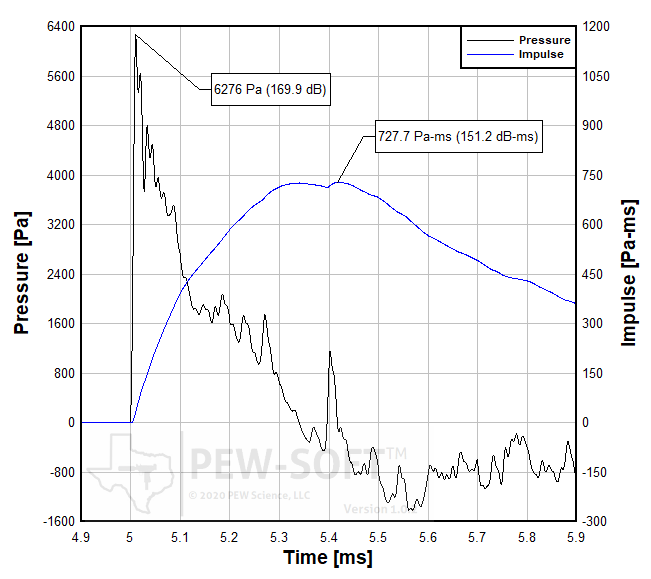
I took all of the silencers I owned, and I started testing them on different weapons. I then started reaching out and met some folks in the industry. These were very large dealers, distributors, and manufacturers. I started borrowing silencers from them and testing them on different guns.
I took all of this raw data and began looking at it. I saw what we were able to get, and what we could show. Again, this was all just raw data. I started to look at things like what are these waveforms doing to the human ear? What do we care about as silencer consumers? If you’re a silencer consumer, you kind of want to know how it is impacting the human ear, and you want to know how they are all doing that.
Silencers behave differently on different weapon systems too, so you need to come up with a rule set and a method of analysis that is universal, and one that is able to capture the behavior of what we care about – hearing damage risk for the user – and we needed to do that for any single test. It didn’t matter if the silencer was on a bolt action rifle, a semi-auto, or a pistol. We needed a universal metric.
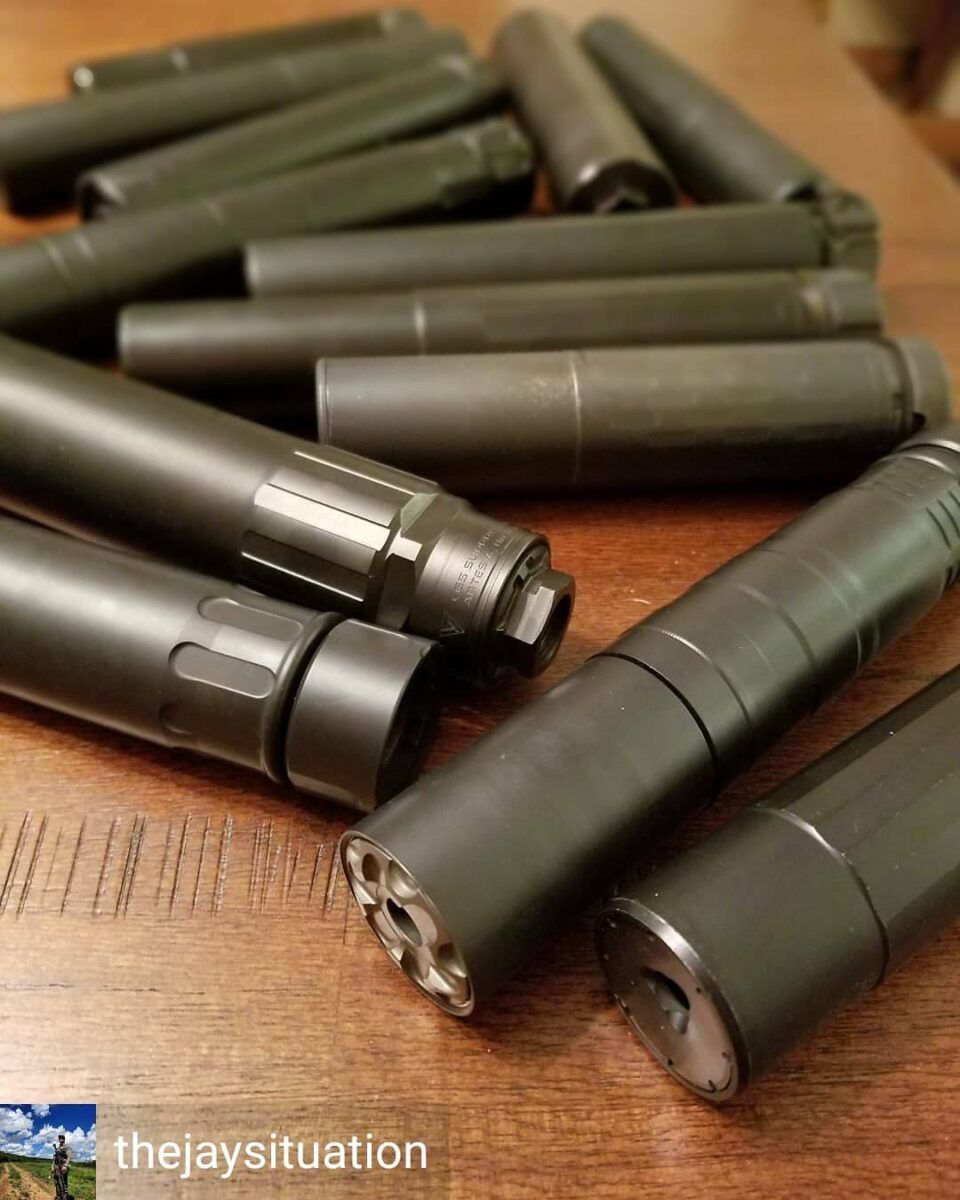
Q: At the risk of getting too scientific, how do you accomplish something like that?
Jay, PEW Science – I started to do correlation studies with various parameters. I would look at the different waveform parameters, and I would see how they would correlate with peer-reviewed hearing damage models, for example, from the Army Research Laboratory (ARL). I had worked with ARL in the past, so I reached out to some folks, and it matured from there.
Now being that I was focusing on consumers, I knew I was going to need to provide something simple, but we also needed to give all of the information behind it, so that folks who wanted to know if the data was real could see that there was a pedigree and that what we were measuring was actually measured. Along the way, there was also the hope there that I could educate. The result was that I came up with one number, which is called the Suppression Rating. It is an integral part of The Silencer Sound Standard.
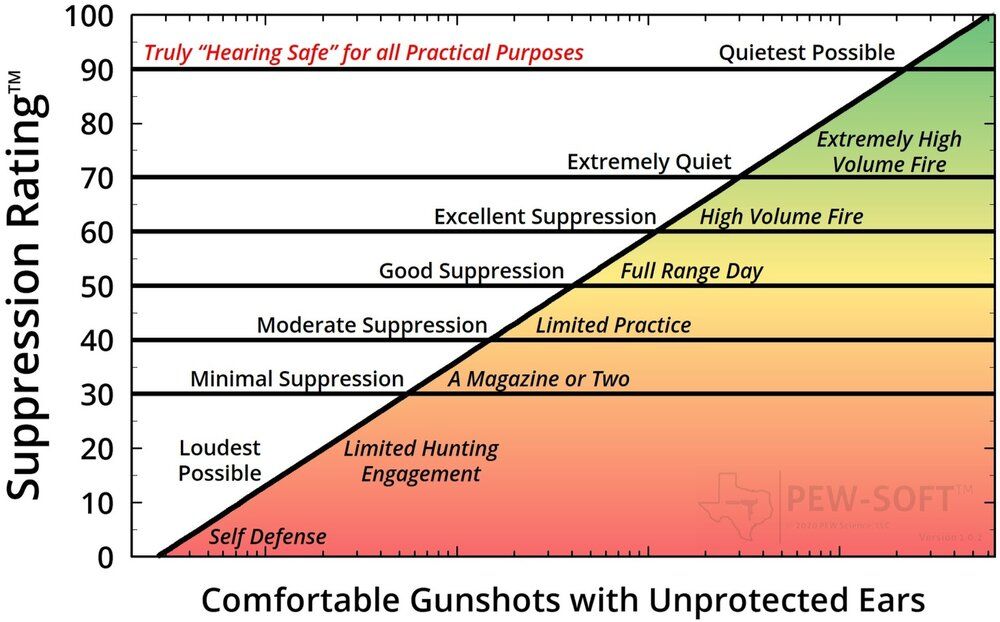
The PEW Science Suppression Rating is an all-encompassing number that essentially ranks a total suppressed weapon system based on the very complex waveform phenomena that is captured during the gunshot, and it distills it down to a hearing damage dose scale for the user. Hearing damage is a function of not only how much peak sound pressure there is, it’s also how long that sound pressure is acting, how many times that sound pressure acts during a certain amount of time, and there are actually very complex parameters within the waveforms that affect how the ear responds. So, an end-user can take the simple Suppression Rating, but drill down as deep as they would like.
It starts out with a composite Suppression Rating. That’s the big number at the top of the page. Then, they can see there is a number at the muzzle. This is the muzzle Suppression Rating. It indicates what the hearing damage risk is one meter to the left of the silencer’s end cap.
We then have a rating that’s six inches right of the shooter’s ear. That’s the at-ear Suppression Rating. This gives you the hearing dose limit for the shooter. That’s really the bottom line for all of this…Folks can look at the data, and they can see what makes a silencer quiet, what makes loud, what the wave shapes look like, and they can get a sense for what’s real and what’s not.
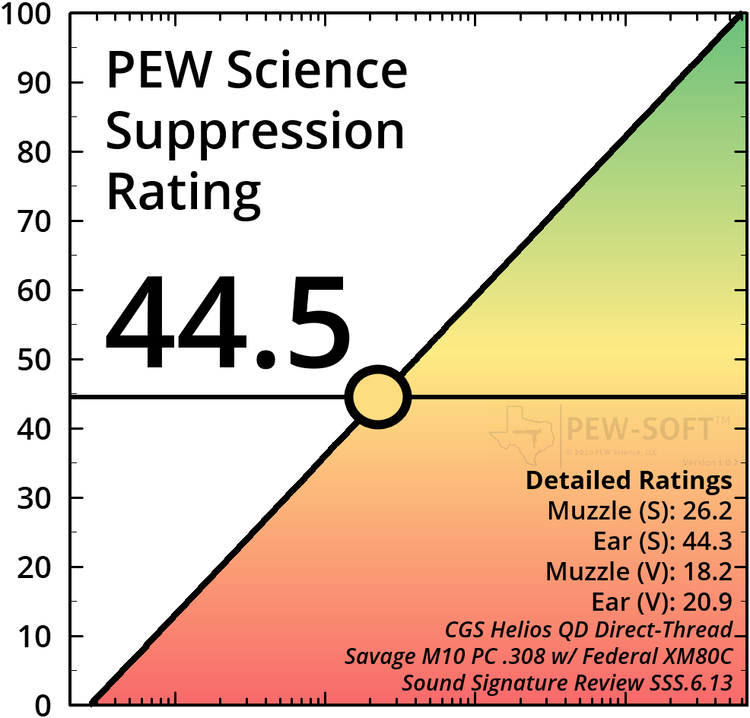
Q: So, can you talk about the process by which PEW Science is capturing data?
Jay, PEW Science – There have already been measurements of suppressed small arms. The typical measurement locations are one meter left of the muzzle, and six inches right of the shooter’s right ear. I didn’t want to deviate from that, because I wanted folks to see what the data actually looks like when you measure like that.
Up until now, no one had really shown their work. They were just sharing peak numbers, and you’d have no idea what the waveforms looked like. I decided to use the same locations that everyone else said they were using, but show the true waveforms from before the gun was fired all the way until the gas had left the silencer, showing how the entire gunshot affects the ears.
Q: What’s your take on the state of the suppressor industry today?
Jay, PEW Science – There are more companies than ever before making silencers, which I think is really great. I would like all small arms to be suppressed. The silencer companies many times know more about suppressed small arms than the firearms manufacturers do. I feel that silencers are often an afterthought to weapons developers and designers. The more exposure folks get to silencers, the more we can normalize their use on small arms. I believe that will improve both consumer and manufacturer education and weapon developer product cycle and product development.
What I see is that you have a lot of silencer manufacturers and a small market for silencer consumers relative to the firearms market at large. There is so much growth potential. As the silencer companies form and start to create products, they have to report their product performance to differentiate themselves from their competition. As a result, we’re giving consumers information overload.
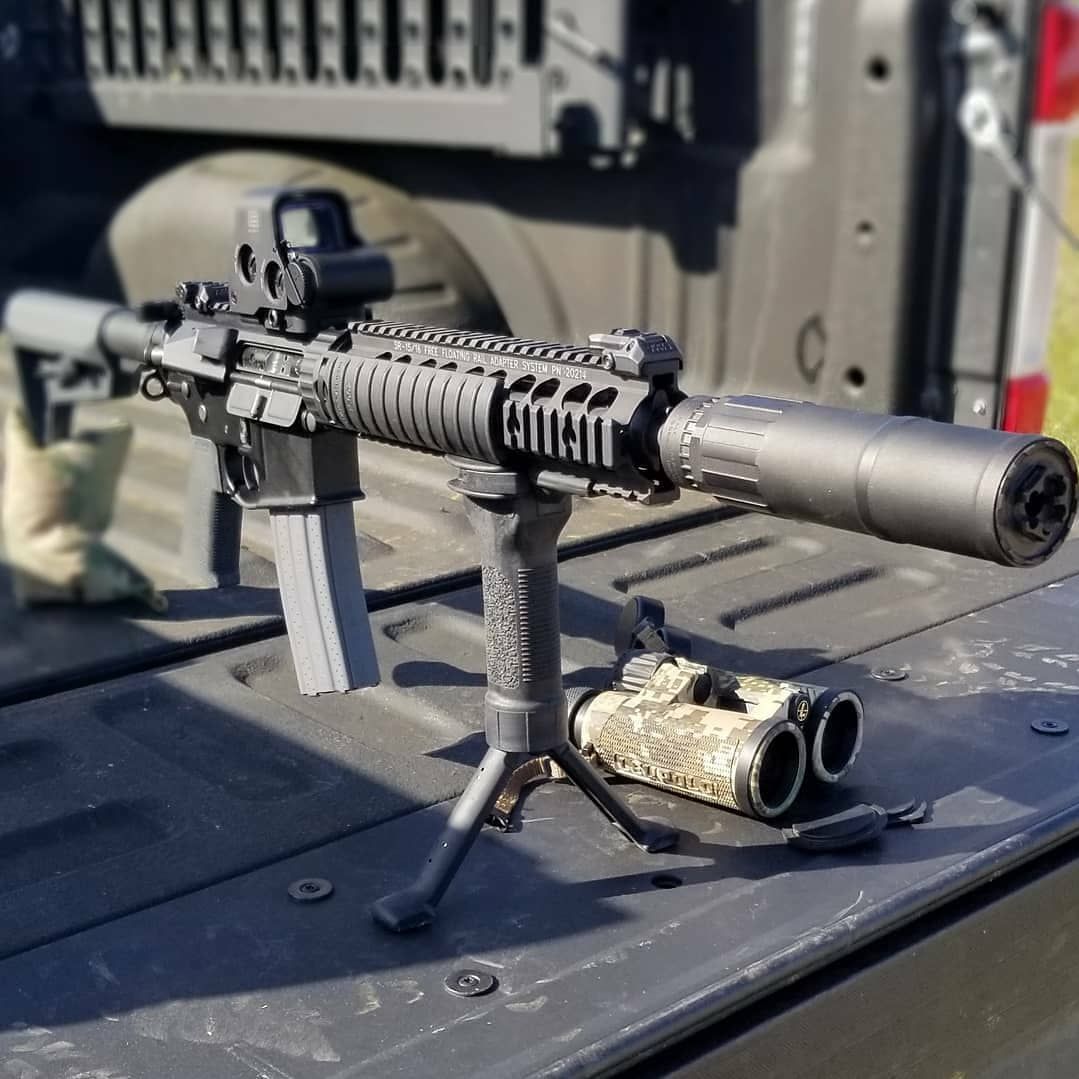
Everyone is saying that their silencer is the quietest, has the lowest blowback on an AR…and the consumer is sitting there wondering how every silencer can be the best and the quietest?
How can the consumer trust that this information is not tainted or biased when it comes from those creating or selling those products? So, they have every incentive to tell you whatever you want to hear. That’s not necessarily a knock. It’s human nature for some companies.
I think what PEW Science can do is multi-tiered for the industry. We can educate consumers to let them know how these silencers work and what they should be looking for. We can also inform manufacturers so that they better understand how their products are working and what consumers are really wanting. We can benefit the weapons manufacturers so that they know how the products are performing so that maybe they understand how the silencers interface with the weapons they are making.
We can also benefit dealers and distributors by getting products in the hands of the consumers that actually meet their needs. I get reports from dealers and distributors every day telling me that the information on my website helped them help consumers make better, informed decisions. The consumer doesn’t necessarily need to have the quietest suppressor, but they at least need to know what they’re getting. So that’s a massive part of this.
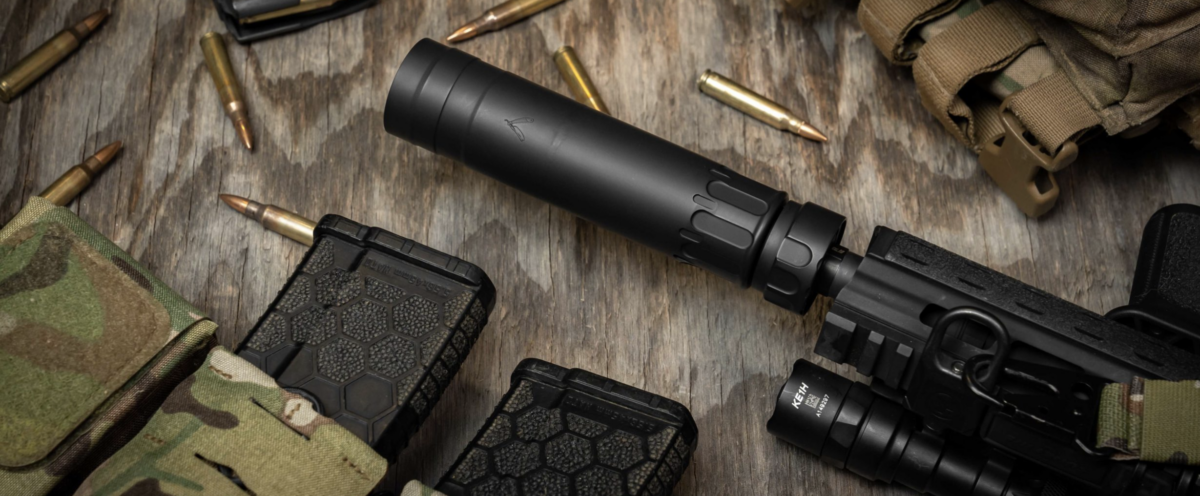
Q: So, they may not want the quietest. What are other parameters to consider when buying a suppressor?
Jay, PEW Science – That’s a good question. Pewscience.com/rankings has a rankings table based on the Suppression Rating, and that’s the sound part. At the top of the page, there are nine things I have listed that people should really consider when deciding on a silencer.
The first one would be your host weapon characteristics. For example, how long is your host weapon’s barrel, and what is the action type? Is it bolt action, or is it semi-auto?
Secondly is the cartridge. What cartridge are you trying to suppress?
The third one is your ammunition type. Is your ammunition type supersonic or subsonic? What are the characteristics of that ammo?
Fourth is accuracy. How does your silencer affect the accuracy of the host weapon?
Fifth is backpressure or flow restriction, meaning if you put this suppressor on a semi-auto firearm, is it going to negatively influence that firearm’s operation? Backpressure can be extremely important for semi-automatic and fully automatic weapon applications. Sometimes it’s not important, and sometimes companies will say that their silencers are low back pressure when they, in fact, are not.
Sixth is durability and maintenance factors. What kind of firing schedule can this suppressor withstand, and what kind of maintenance is required for it? Durability is often something that is oversold.
One of the biggest things I see is a silencer being ‘full auto rated.’ A lot of times, there is no basis for that statement. There are actually specific firing schedules that a silencer can be rated for. Some manufacturers do test to those schedules and give that info.
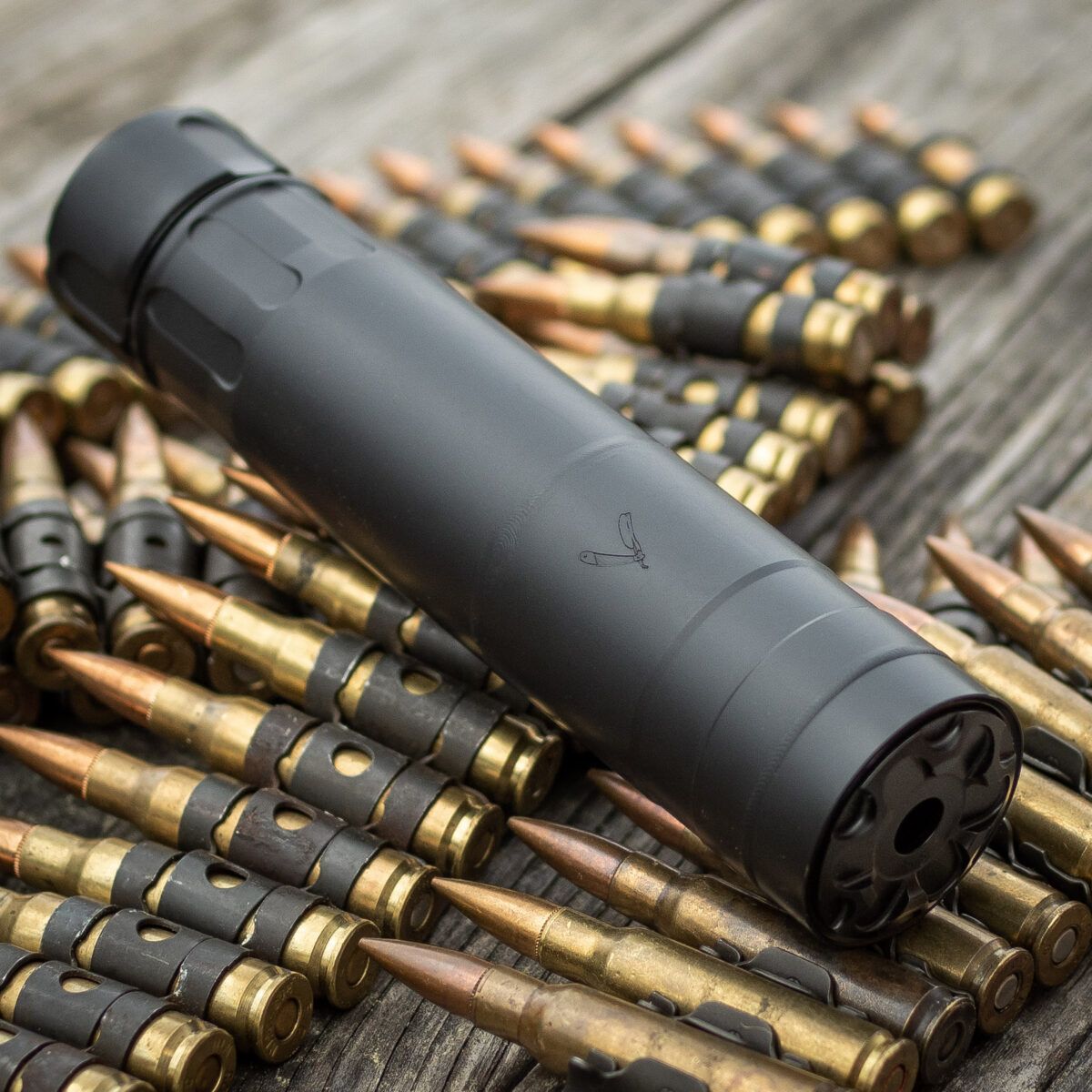
Other times, manufacturers will give something a full-auto rating that could not possibly be used for any reasonable amount of time on a full-auto weapon. You have to be very careful as a consumer and determine precisely what they mean.
Seventh is the fact that weight matters. How heavy is the silencer? How big is it? Does it meet your requirements there?
Eight is sound. What about sound? Is this something that you will use for hunting, for one shot, or is this something that you’re going to use at the range, and your hope is to not wear hearing protection all day? Is that even possible for you on your weapon system?
Finally, you need to consider flash. What about the flash signature? Suppose you’re a night hunter hunting pigs at night through night vision on your AR. Is the flash going to be something that interrupts your visual capability? Flash mitigation is important, and sometimes it is not. I think many consumers may not understand when it is essential and when it isn’t.
Keep in mind, all of the reviews on my website are Sound Signature Reviews. We also quantify flow restriction or backpressure for silencers.
I am currently not yet testing for flash or accuracy. Now, I do list characteristics such as weight and size, and I do try to give information about durability and maintenance factors, as well. Then, of course, the cartridges and ammunition type are listed, and the suppressors are tested on standardized hosts with standardized ammunition so that it is all apples to apples. But yeah, this effort is just starting, and we’re really focusing on the overall sound signatures and flow rate, or backpressure.

Purchase Your Next Suppressor at AR15Discounts.com
Q: If I have a standard AR, am I ok to suppress it, or do I need to do anything to it first? Can I assume my off-the-shelf AR can be successfully suppressed?
Jay, PEW Science – That’s a really good question and an important question. There are absolutely things that you need to consider when you are suppressing any small arm. The AR-15 platform specifically has several characteristics that you need to keep in mind. You can completely change the operation of an AR-15 by adding a silencer. By adding a silencer, you are completely changing the weapon system…not only the sound signature, but its physical operation.
When you add a silencer to an AR-15, you effectively increase its dwell time, meaning that you are sending gas through the gas port for a longer time than the weapon was designed for. There are a few things to help mitigate the adverse effects of doing that. You can’t completely eliminate the adverse effects, but you can minimize some of the bad stuff.
There are several “knobs to turn” when you are “tuning” an AR-15 for suppressed use. For instance, you can use an adjustable gas block. What that can do is make your gas port orifice size smaller so that you are reducing the total gas impulse through the gas tube. What that does is counteract that longer dwell time, allow your bolt carrier to stay in the closed position for a longer amount of time, and prevents your bolt carrier group from unlocking early.
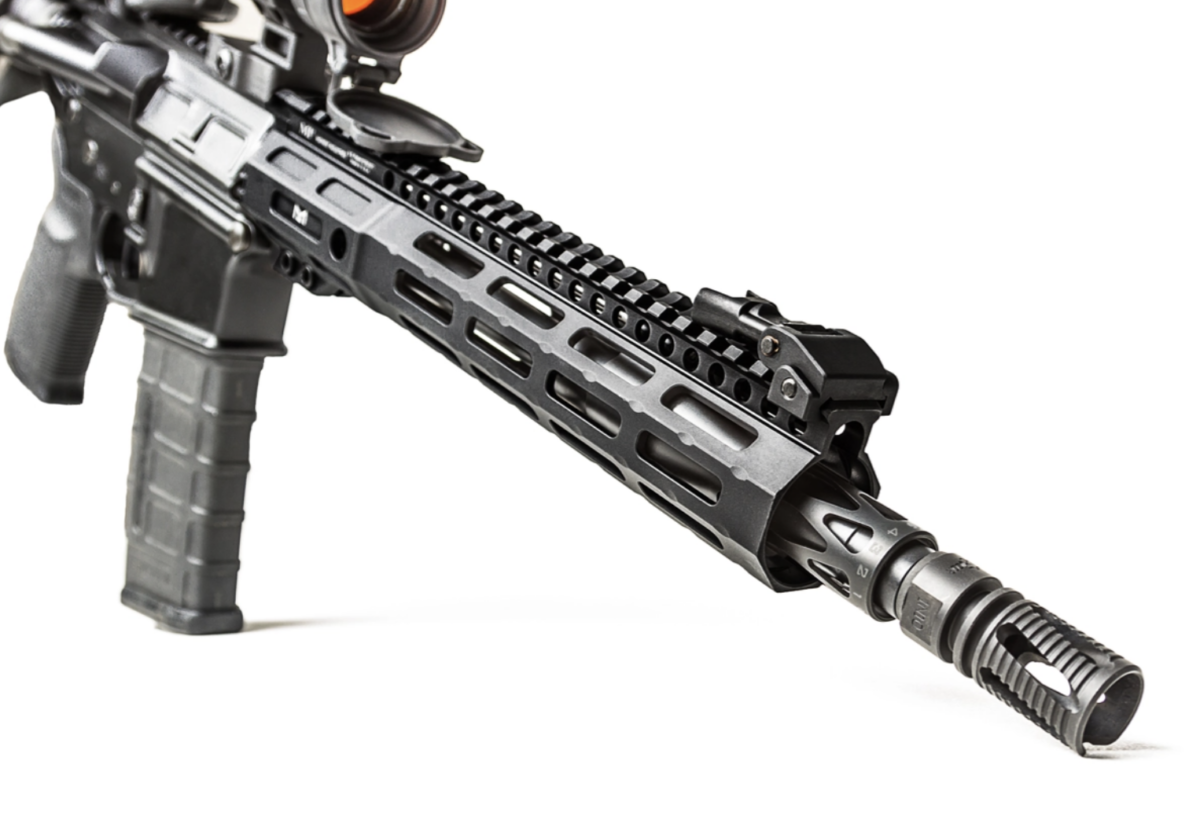
When you add a silencer, increase the dwell time, and increase that gas impulse through the gas port, your bolt carrier may move rearward too early, which may unlock the bolt too early, before the pressure inside the barrel drops enough. When you get your bolt unlocking too early on an AR, that will increase the amount of gas blowback out of the action and out of the barrel. That is going to increase the noise for the shooter. It is going to increase fouling that is already increasing due to silencer use. It will also increase the velocity of your bolt carrier group, which can increase parts wear and decrease reliability.
So, that’s one thing – an adjustable gas block. Another thing you can do is really simple – add a heavier buffer. If you have a carbine buffer in an M4, perhaps change it to an H buffer, or maybe an H2 buffer. If you’re really over gassed, perhaps you can add an H3. It’s something that’s very economical for someone to do without ever touching the gas port. It can go a long way toward slowing down the action, and it will help with sound, fouling, parts longevity, and reliability.
You can also do some things that are a little more involved. You could change your barrel to one with a smaller gas port. You could even get a barrel with a gas port that is closer to the muzzle. Now, what does that do? It decreases your dwell time…Imagine an 11.5″ barrel with a mid-length gas system.
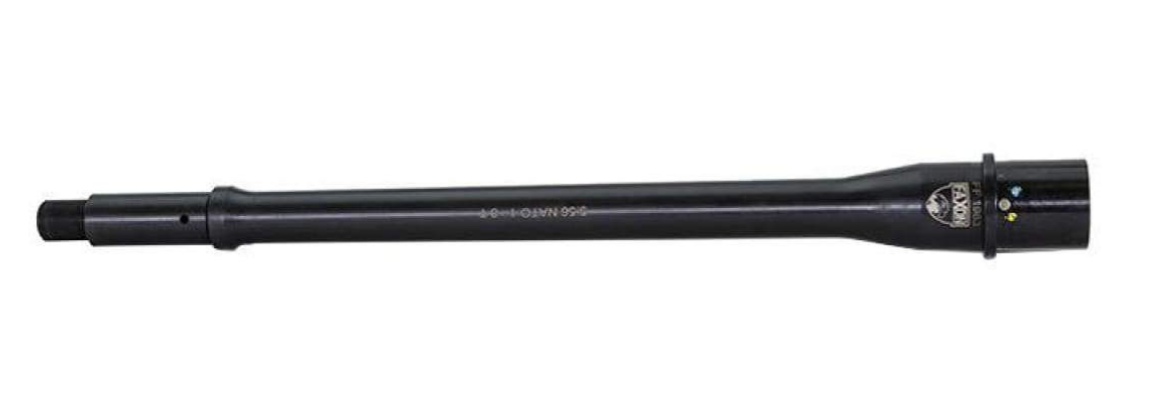
Faxon Firearms 11.5″ GUNNER 5.56 NATO Mid-Length 4150 Nitride / Melonite Barrel
A long time ago, you would never have seen anything like that, but if you add a silencer, boy, it can make your shooting way smoother. Or perhaps you have a 16″ barrel with a rifle or intermediate length gas system.
You can go to something like specialized bolt carriers. There are some on the market I do not recommend because they are sort of like a band-aid. I would recommend any type of bolt carrier that is delaying unlock by mechanical means.
A few are on the market right now, like the SureFire Optimized Bolt Carrier Group. It does many things, but one of the key things it does is it delays unlock with a longer cam path. Another one that I know about is the LMT Enhanced Bolt Carrier…
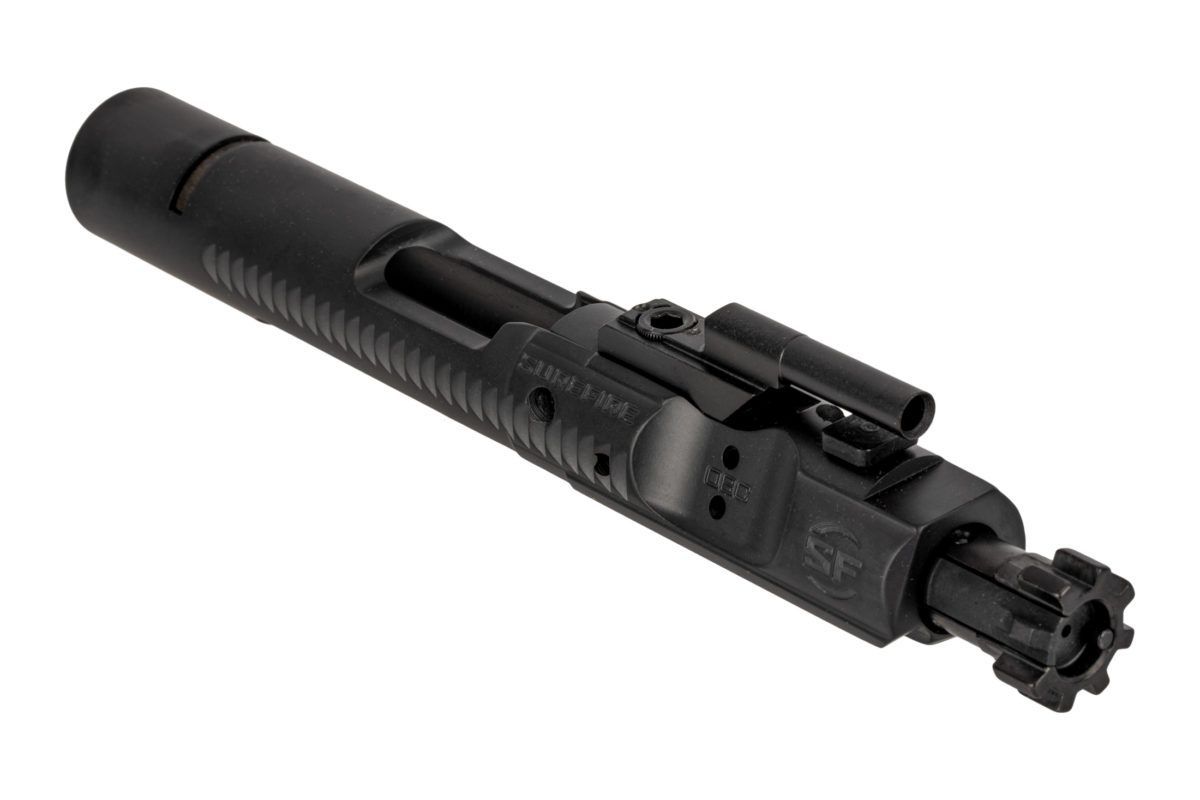
Surefire Optimized BCG w/ Buffer & Spring
Q: What should we look for in a suppressor company? Can you talk about the importance of good customer service?
Jay, PEW Science – There are several factors to consider when looking to purchase a silencer. These factors may be ranked differently depending on the consumer. One thing that I personally really like to look at is customer service. I think that the process for purchasing a restricted NFA item can be arduous. I think if you ever have a problem with that product, be it a manufacturing problem or user error, you want to make sure that the company stands behind it and has a good turnaround time and good customer service.
To me, actual build quality and design pedigree matter. I mean that if I am buying a silencer, I want to make sure it is designed properly…A silencer is a dynamic pressure vessel, and there is operator risk by using a suppressor. You’re containing high-pressure gas and subjecting the silencer to complex load cases. I’ve seen silencers blow apart. I’ve seen them injure people and cause damage to objects and their surroundings. I think that companies using sound engineering processes and practices is important.
Personally, I like a good fit and finish. I think silencers that look cool are cool (laughs), but that’s just me. Finally, accuracy is important to me. The type of mount can impact accuracy, and I’ve seen some really wonky stuff. You want to make sure the attachment mechanism is proper and the alignment of the suppressor is good.
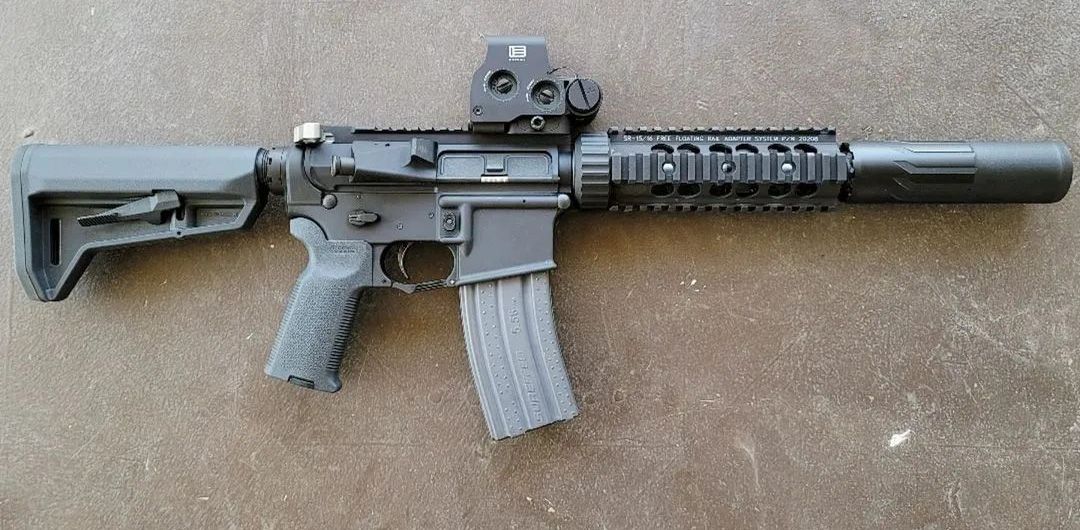
Q: Your work ethic and output at PEW Science is quite amazing. Can you comment on that, and is there anything else you’d like to add?
I would not be doing this if I didn’t think it would benefit consumers and the entire industry. PEW Science is definitely a lot of work, and it is an incredible undertaking. There’s a reason that no one else has done this before. Nothing in life worth doing is easy, and it’s my hope that not only can we normalize the use of suppressed small arms, but we can also provide consumers the education to be able to demand the proper performance characteristics in products. I think a rising tide raises all ships. I think it’s working already, and we’re starting to change things.
###
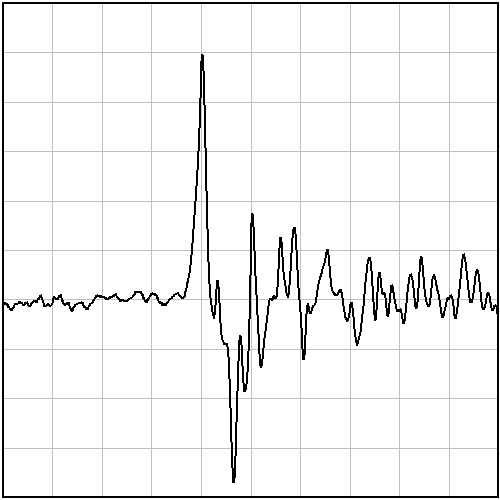
Read the full article here

